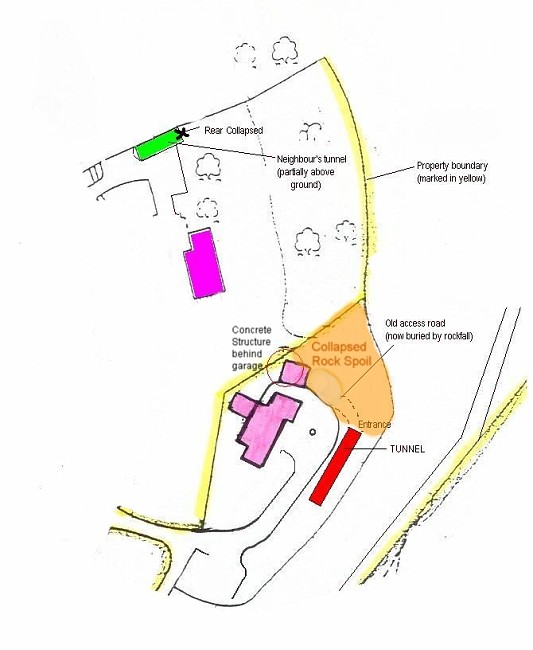However, there is one local legend which I have had cause to consider whilst investigating the wartime history of the property. That is because the legend, on closer investigation, actually concerns the property (as it existed in the war)! Perhaps the best way to tell the story is to paraphrase from a fairly old piece of local historical research that I traced in one of the museums here, which contains several paragraphs debunking some of the local tunnel myths. After those paragraphs, it continues along the following lines:-
NOTE: For the sake of this post I have changed the name of the published property address, which in the original text is the same name as my neighbour's house.
"All these stories are firmly believed in by the gullible. Perhaps the best illustration of imaginary tunnels came from a gentleman who insisted that, as a small child, he had regularly played in a tunnel which commenced in the front garden of a house called [the Granary], and ran right through to [another adjacent valley], a distance of some three quarters of a mile; he claimed he had regularly traversed the entire length of this tunnel. Attempts made to tell him otherwise were to no avail. He was adamant, and added that as the owner was worried about accidents, he had caused the tunnel roof to be blown in at 3 different places. "If you don't believe me, ask him!".
We did, and the former owner of [the Granary] roared with laughter! The alleged tunnel was nothing more that a half round steel shelter (which admittedly looked like a small tunnel entrance from the outside) which may be seen from the road and is now partly used as a garage, and partly as a wood store. It is about 30 feet long. He was able to relate that when his father in law [the father of the previous owner of my house] purchased the property as long ago as 1946, even then there were stories of german weapons concealed behind a false wall at the rear of his shelter; to clear up the matter the Royal Engineers, who were still working in the Island at the time, were asked to investigate. They did, and after much hammering and probing, were able to report that the rear of the shelter consisted of nothing but solid rock. Despite this, local folklore still insists there is a concealed tunnel"
Now, as I have already said, my neighbour's property does indeed have the small half round round steel shelter that is about 30 feet long, as described above.
 What is interesting though, is that there is no mention of any checks being carried out or investigation being undertaken in the quarry behind the main house at the "Granary", in what is now, and undoubtedly was at the time that the aforesaid research was published, the part of the original "Granary" land that had been sold off to form my (quite separate) property!
What is interesting though, is that there is no mention of any checks being carried out or investigation being undertaken in the quarry behind the main house at the "Granary", in what is now, and undoubtedly was at the time that the aforesaid research was published, the part of the original "Granary" land that had been sold off to form my (quite separate) property!Don't you just love myth and legend?

3 comments:
Usually, a long tunnel is built straight and not with a series of turns and angles. From the siteplan you drew, it doesn't appear that the separate tunnels would connect unless they both extended to an intersection which would seem odd.
Is there a way to drain out the area under your yard to see what it might actually hold or to see where it might take you? Just a thought.
@neutrino2008:
The German tunnels here were often curved and/or included intersections for access to parallel tunnels.
Post a Comment